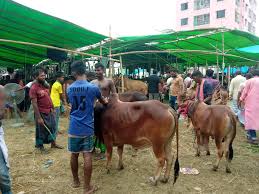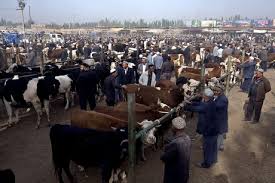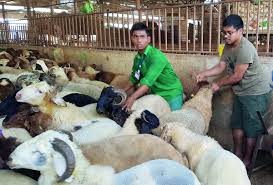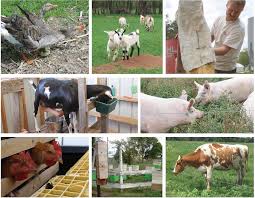Consumer behaviour is the study of individuals, groups, or organizations and all the activities associated with the purchase, use, and disposal of goods and services, including the consumer’s emotional, mental, and behavioural responses that precede or follow these activities.
Consumption, on the other hand, is best described as the final purchase of goods and services by individuals. Examples include buying a new pair of shoes, a hamburger at a fast-food restaurant, or services like house cleaning. It is also often referred to as consumer spending.
Consumer behaviour is an interdisciplinary social science that blends elements from psychology, sociology, social anthropology, anthropology, ethnography, marketing, and economics, especially behavioural economics. It examines how emotions, attitudes, and preferences affect buying behaviour.
Characteristics of individual consumers such as demographics, personality, lifestyles, and behavioural variables like usage rates, usage occasion, loyalty, brand advocacy, and willingness to provide referrals are all investigated in formal studies of consumer behaviour. The study also explores influences on the consumer from groups such as family, friends, sports, reference groups, and society in general.
The study of consumer behaviour is concerned with all aspects of purchasing behaviour from pre-purchase activities through to post-purchase consumption, evaluation, and disposal activities. It also includes all persons involved, either directly or indirectly, in purchasing decisions and consumption activities, including brand influencers and opinion leaders.
Research has shown that consumer behaviour is difficult to predict, even for experts in the field. However, new research methods such as ethnography and consumer neuroscience are shedding new light on how consumers make decisions.
Read Also: How to Choose the Right Livestock for your Farm
The Concept of Consumer and Consumption

Consumers are becoming increasingly interested in how their food is produced. Producers (or processors, retailers, etc.) use labels to increase (1) consumer awareness of a particular product feature (say, organic) and (2) willingness to pay for the food product, assuming the featured label is of value to consumers.
Today’s grocery store shoppers are interested in a multitude of food product attributes, including not only attributes of the food itself, like low-fat or low-calorie, but also attributes surrounding the production processes employed to produce the product.
Consumers are increasingly interested in whether food products, especially meat and milk products, were produced in an environmentally and socially responsible manner. Livestock products, in particular, evoke consumer sentiment regarding the treatment of livestock and welfare of animals used to produce meat and milk products (Frewer et al., 2005).
Consumers are considering production process attributes when selecting food products, such as environmental impacts, food safety implications, animal welfare impacts, and social implications of production methods.
Consumer confidence regarding the meat and milk products they purchase may depend on a number of factors, including the specific meat or milk product in question, the species of livestock animal employed in the production of that good, which production process attribute was verified, and the source of any available verification information.
The Theory of Demand and Consumer Behaviour

The theory of demand begins with the examination of the behaviour of the consumer since the market demand is assumed to be the sum total of the demands of individual consumers. The consumer is assumed to be rational.
Given their income and the market prices of the various commodities, they plan the spending of their income to attain the highest possible satisfaction or utility. This is the axiom of utility maximization. In the static theory, it is assumed that the consumer has full knowledge of all the available commodities, their prices, and income.
To attain this objective, the consumer must be able to compare the utility (satisfaction) of the various ‘baskets of foods’ which they can buy with their income.
There are two basic approaches to the problem of comparison of utilities: the cardinalist theory and the ordinalist theory. The cardinalist school postulated that utility is measurable, perhaps in monetary units, by the amount of money the consumer is willing to sacrifice for another unit of a commodity.
Others suggested the measurement of utility in subjective units, called units. The ordinalist school postulated that utility is not measurable but is an ordinal magnitude. The consumer need not know in specific units the utility of various commodities to make their choice.
It suffices for them to be able to rank the various ‘baskets of foods’ according to the satisfaction that each bundle gives them. They must be able to determine their order of preference among the different bundles of foods or livestock products.
Seven Methods of Animal Production Influencing Consumption Patterns
- Product is certified organic.
- Animals were humanely raised.
- Animals were grass-fed (or raised on a vegetarian diet).
- Animals were not administered growth hormones.
- Animals were not administered antibiotics.
- Animals were raised in a free-range (or cage-free) environment.
- Genetically modified organisms were not used in the production of this product (Non-GMO).
Factors Affecting Consumption
What else do economists believe affects consumption and the decision to purchase products and services, besides real income?
1. Prices: If prices are higher, then a person’s total level of consumption will be lower because consuming will use up a higher percentage of their income.
2. Taxes: As taxes on goods and services (sales taxes) rise, people may not be able to afford as much as they used to and, as a result, will consume less. The income tax rates paid also affect the ability and decision to consume. Higher tax rates lead to less disposable income, which is money left over for spending and savings after paying taxes.
3. Saving: People generally have two things they can do with their money. They can save or they can spend. The more money people save, the less they have to consume in the short run.
4. Consumer Confidence: If people are worried about the economy or their own future income, they may delay making purchases to provide some safety and extra cash for future expenses. They will save or delay their consumption until they feel better about what lies ahead.
Four Principles of Consumption
When analysing buying behaviour, a consideration of four principles of consumption is useful: harmonious consumption, diminishing utility, variety, and satiety.
1. Harmonious Consumption: This is the principle of consumption referring to the tendency to purchase combinations of things. An example of harmonious consumption is the matching of cow meat and accompanying packaging accessories.
2. Diminishing Utility: Diminishing utility is the principle holding that as more of a given product is consumed, per-unit satisfaction of the product declines.
3. Variety: This is the principle of consumption referring to the desire to accumulate different kinds of goods.
4. Satiety: This is the principle of consumption concerning the desire to obtain an unlimited amount of goods and services.
These principles almost always are involved, in one way or another, in purchasing decisions. Consumers who recognize the influence of these four principles on their buying decisions will be better able to control their buying habits and, therefore, able to make better use of their money.
Read Also: Guide on How to Start a Food Forest
Consumption Patterns in Economics

The economic notions of consumption patterns refer to expenditure patterns of income groups across or within categories of products, such as food, clothing, and discretionary items. Sociocultural and political extensions of the consumption pattern idea probe the class, cultural, and symbolic dimensions of the organization of consumption.
Consumption is distinct from consumption expenditure, which is the purchase of goods and services for use by households.
Consumption differs from consumption expenditure primarily because durable goods, such as automobiles, generate an expenditure mainly in the period when they are purchased, but they generate “consumption services” (for example, an automobile provides transportation services) until they are replaced or scrapped.
Neoclassical (mainstream) economists generally consider consumption to be the final purpose of economic activity, and thus the level of consumption per person is viewed as a central measure of an economy’s productive success.
Role of Consumption in Macroeconomics and Microeconomics
The study of consumption behaviour plays a central role in both macroeconomics and microeconomics. Macroeconomists are interested in aggregate consumption for two distinct reasons.
First, aggregate consumption determines aggregate saving, because saving is defined as the portion of income that is not consumed. Because aggregate saving feeds through the financial system to create the national supply of capital, it follows that aggregate consumption and saving behaviour has a powerful influence on an economy’s long-term productive capacity.
Second, since consumption expenditure accounts for most of national output, understanding the dynamics of aggregate consumption expenditure is essential to understanding macroeconomic fluctuations and the business cycle.
Microeconomists have studied consumption behaviour for many different reasons, using consumption data to measure poverty, to examine households’ preparedness for retirement, or to test theories of competition in retail industries.
A rich variety of household-level data sources allows economists to examine household spending behaviour in minute detail, and microeconomists have also utilized these data to examine interactions between consumption and other microeconomic behaviour such as job seeking or educational attainment.
The economic notions of consumption patterns refer to expenditure patterns of income groups across or within categories of products, such as food, clothing, and discretionary items.
The four components of gross domestic product are personal consumption, business investment, government spending, and net exports. That tells you what a country is good at producing. GDP is the country’s total economic output for each year.
A consumer profile is a way of describing a consumer categorically so that they can be grouped for marketing and advertising purposes. By targeting advertising to a specific market segment, companies and marketers can find more success in selling a particular product and increase profits.
Consumer behaviour can be explained as all social, psychological, and physical behaviour of consumers as they become aware of, evaluate, purchase, consume, and tell others about products and services. Characteristics of consumer behaviour are: Consumer behaviour is part of human behaviour. This cannot be separated.
Do you have any questions, suggestions, or contributions? If so, please feel free to use the comment box below to share your thoughts. We also encourage you to kindly share this information with others who might benefit from it. Since we can’t reach everyone at once, we truly appreciate your help in spreading the word. Thank you so much for your support and for sharing!
Read Also: Boilers and Boiler Water Treatment in Industrial Waste and Water Treatment
Frequently Asked Questions
We will update this section soon.

